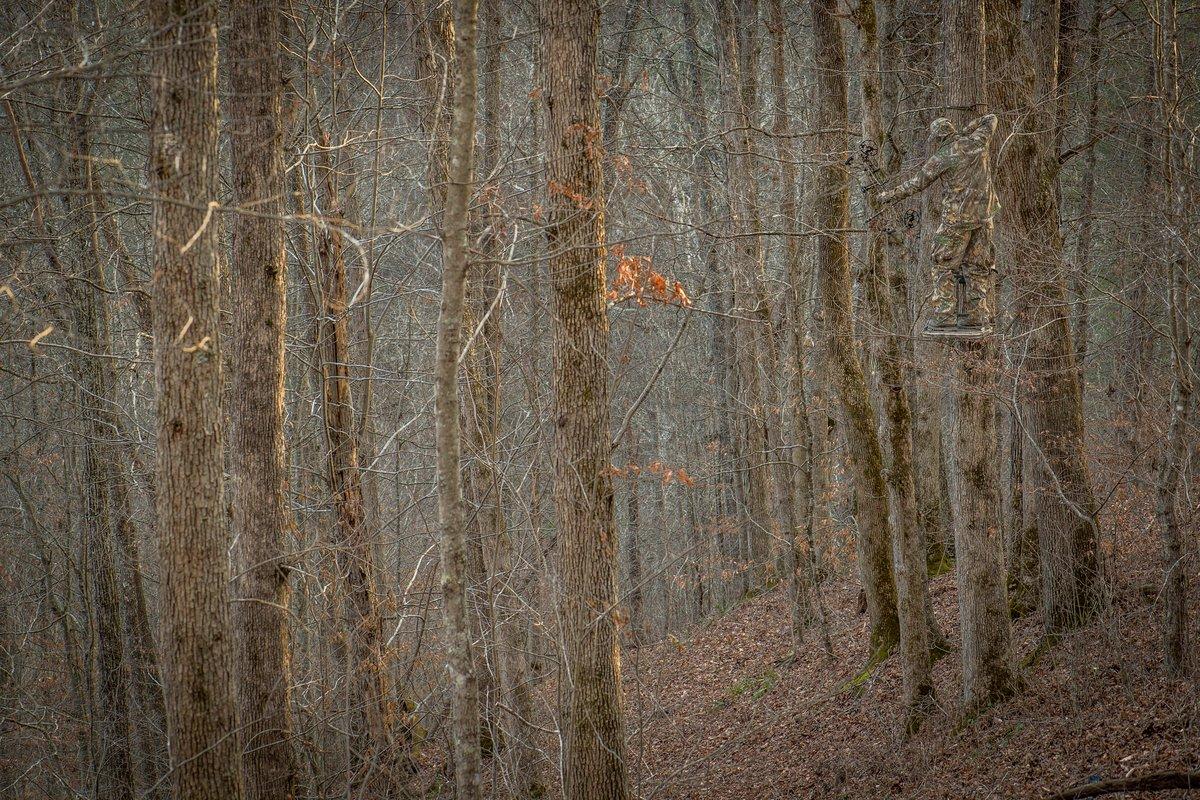Choosing the perfect treestand location takes time, practice and skill
It takes recognizing the perfect tree — the killing tree — to arrow big deer on a consistent basis. Individual bucks have their own personalities and their own ways of doing things, especially when they get older.
My friend Jim Hill has taken many nice bucks with his bow. He has a philosophy on fine-tuning stands that's as good as any.
If I see a buck I'd like to shoot do something once, I won't move my stand, Hill said. But if I see him do the same thing again, I'll be over there finding a spot for a stand as soon as I can climb down.
It pays to act quickly on intelligence you gather when hunting a specific deer. They don't show themselves very often and their patterns tend to be short-lived. When you've got a line on one, don't wait around. Get on him before he relocates or changes his patterns.
It's hard to find the perfect tree simply by normal methods, though. Studying the lay of the land and the buck sign you find while scouting will only get you close. It will get you to the right general area, but not to the perfect tree. That takes fine-tuning. With a bow, you need the exact tree and that takes lots of observation.
One of the primary ways to improve your odds of placing the stand in the perfect tree on the first try is to spend as much time observing from a distance before the season opens as possible. This is especially valuable when hunting early season food sources.
Another way to find a killing tree is to become an expert in your understanding of two or three consistent movement patterns and behaviors. Then, all you need to do is find the right conditions and you know the pattern will be there.
Bill Clink is a realtor in Rochester, Minnesota, and has bowhunted the bluff country of southeastern Minnesota for decades. One of Clink's favorite patterns has proven itself repeatedly to the point where he knows exactly how to play it. Bill learned that big bucks travel on side-hill trails found about one-quarter to one-third of the way down steep slopes. They'll use the downwind side of the ridge most, though. They'll oftentimes bed out toward the end of points as well. Bill has taken a number of big bucks by using this information.
Think about the behavior you've watched for years. Knowing a small number of patterns intimately is a great way to find killing trees in new areas. Simply look for the right situation and you are instantly sitting in one of the best stands. Obviously, experience will help you identify and catalog several such patterns, making you a more versatile and flexible hunter under a wider range of conditions.
If you are just starting out in this wonderful sport of bowhunting whitetails, don't be discouraged if you don't know any of these common patterns well enough to pick out a killing tree on your first pass. It will come with time. Instead, focus on what you see in front of you every day of the season. That is how you learn and how you become a truly good deer hunter. Always ask why when you see a buck do something you didn't expect, and always look for connections between seemingly unrelated observations.
Ultimately, you will see enough and absorb enough from the activity around you to answer one question: which tree do nearly all the bucks traveling through my area eventually pass? In the end, keeping your eyes open all the time is the surest way to find the killing tree.
Don't Miss: The Case for Climbing Stands
Check out more stories, videos and educational how-to's on deer hunting.








